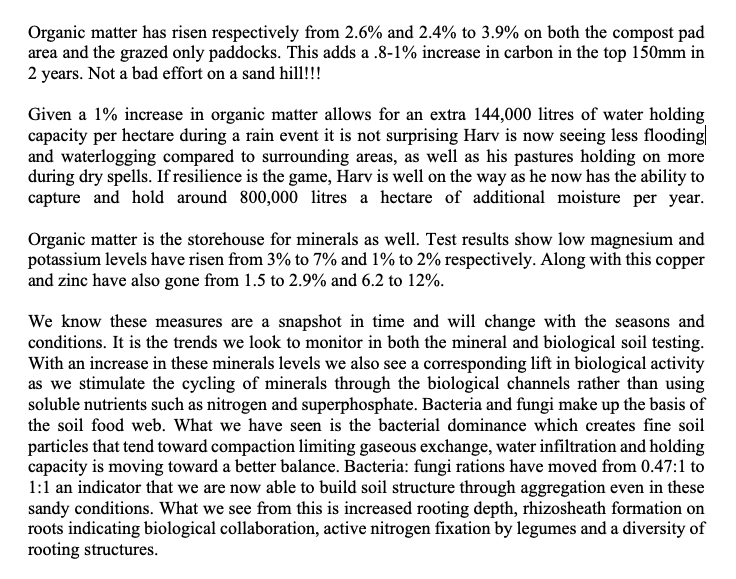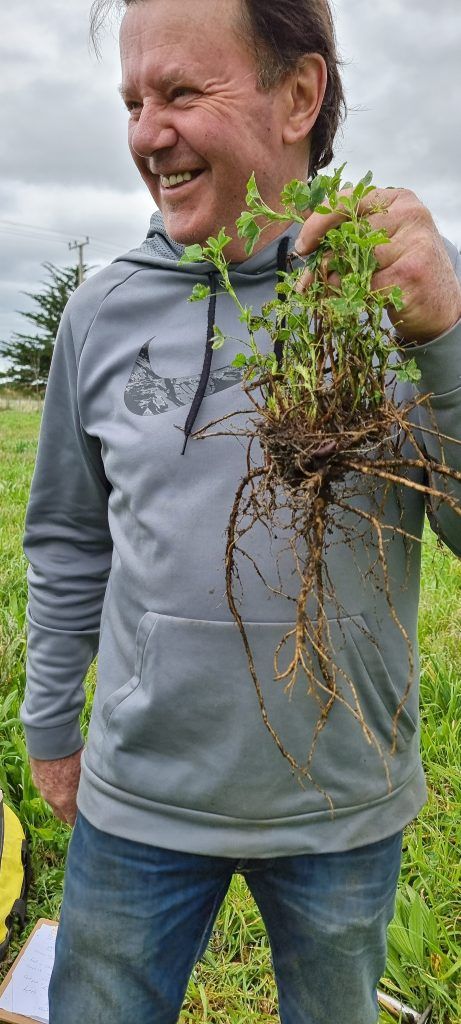Ph: 06 280 0938
What the hell does ‘Regenerative’ even mean?

It’s a cool terminology that is very new and now bordering on being overused (says I who’s about to use it anyway)
Here’s a dictionary definition: Regenerative means able to or tending to regenerate—to regrow or be renewed or restored, especially after being damaged or lost. The act or process of regenerating is regeneration.
Here’s mine: You leave the planet and people in better shape than before, with your actions.
There are many debates going on at present around the use of this term regenerative, which is good, as we all wrestle with a future that is dire for humanity due to our current modern systems not being regenerative.
The only things I am personally sure of with regenerative systems is they ALL rely on biodiversity (whether people or plants), and they All take time and patience to create.
Think of a rainforest: ‘ngāhere’ in Aotearoa, and its continual journey of growth and decay as plants compete for light, yet share nutrients and water under the ground. When there is a scar on the whenua, the primary invaders (e.g. manuka) come in to heal the whenua, and from there it gets populated with longer-term trees and shrubs.
This only happens because there is a thriving ecosystem that is there for each other. This has taken aeons to work this all out, and it just happens. There is definitely competition and luck as to what plants make it, but the balance and goodness of the whole is the design that all of the organisms are working towards.
Recently the base team at the office asked if they could come to view the progress to regeneration on our wee farm ‘Raumai Iti’ just outside of Bulls. I was pretty chuffed with the request, and so Michelle and Karen came out on a lovely spring day.
I say progress to regeneration because after four years we are not yet fully regenerative. I think that’s two or three years away yet. We are still actively building organic matter by introducing straw and baleage onto our sandy soils, and this is high input stuff which comes to an end in 12 months.
A challenge with changes to a system fed by a biological ecosystem, is it’s bloody hard to know where you are at. Observation is a paramount skill for a Regen system of any kind, and I’m not that well trained or experienced in the workings of the soil, bacteria and mycelium networks so have engaged Jules Matthews, a Regenerative Agricultural Coach to help guide me understand and measure what’s hidden from my capacity to understand, and get some scientific measurements.
From my Regen Ag Coach Jules Matthews who’s been scientifically measuring the progress for the past 2 years:

When you read this report it is evident of deep knowledge of a biological system.
So back to the field trip:
On the day they visited we were applying 60 tonnes of vermicast as a fertiliser from MyNoke (largest worm farm in the world – Managed by Phil Holland and Chaired by Maria King – both members) that day, so that was cool to show off.
The timing was also perfect as I could clearly show them the different stages of the programme. One paddock had just come out of a 100 day composting stage, another paddock a year on from that, and the paddock that will be composted next winter. All vastly different in their regen journey.
This next photo (above) shows a well-developed gnarly tree that I snapped a shot of as we went into the Kiwi House, near the end of our hīkoi. It summarised beautifully for me what we had just learnt indirectly on our walk about what leadership growth could look like in action. Growth that is enduring, layered, interconnected, made up of a range of ‘less-than-perfect’ organisms that are reliant on each other, and who work together to nourish the next generation. It’s messy and beautiful and makes sense now (to me at least!).
Loading 30 tonnes of vermicast, created from 150 tonnes green waste by 1.25m worms in 7 days.Spreading vermicast
What’s ironic is that I think I got more out of their field trip than Karen and Michelle possibly did. They had fresh eyes and perspectives and were genuinely interested in what I had been up to, and then it was a statement that Michelle made, saying it really does take a lot of ground work before biology can kick in and do its own thing.
Then Michelle said – that’s just like what we are working on at Collective Intelligence eh!
Boom pure gold in that reflection.
Collective Intelligence has been operating now for 15 years, controlled by me as a positively paranoid founder fussing over my baby. It has been nowhere near regenerative, barely sustainable at times, yet we have been building organic matter all this time. We have been at the manuka or sapling stage of this journey, building deep trust and values that people get excited about.
And now is the right time to be clear about our intent of interconnecting people to create regeneration. We have the biodiversity of people, the depth of trust, and soon the platform to bring everyone together to share their resources. Not everyone is going to want to get on board – initially. I get that, but we are patient.
It’s going to take investment, skill and time.
Right now there are teams of people creating new messaging, art work, IT solutions, ways to pollinate, and I am not involved in any of it directly. AND IT FEELS WONDERFUL.

These roots grew in just 10 months!
Actually better than wonderful; I feel humbled that many people with talents I do not possess are as committed as I am to this next phase of our journey. I have tears in my eyes and heart beating as I reflect on this moment.
I believe the fact we have never had any corporate or government funding has been a huge benefit as we have evolved continually sensing and responding to our members, and having a board that is adaptable to the opportunities of what’s in front of us.
Our biggest limitation now will be letting go of old thinking and stepping into a model shaped by nature, not the comfortable western patterns we are so used to.
Right now there is a team of 13 pollinators working on the values and culture of the IT platform where the members, alumni, and associates will be homed.
What can happen there? The opportunity for some of the smartest, kindest, most passionate people on these islands to interconnect.
What’s possible? Here’s an example underway right now. A Hatcher Team (diverse team curated by myself of members and non-members) focussed on bringing a gold standard for Aotearoa NZ in Paediatric Palliative care, which doesn’t exist right now. This will positively affect 380 families a year, once in place.
What’s going to change once the platform is activated? I won’t have to curate Hatcher Teams for example – it can happen organically!
And then from there – well Ants Cabraal has beautifully written this Blog to describe our next horizon.
This my friends is what regeneration could look like. How will we measure this? Not sure. We will need someone with the likes of Jules Matthews’ deep knowledge to help us understand the intricacies.
Come join us: drop me an email at harv@collectiveintelligence.co.nz and I can explain the different options and tiers you can get involved in.
Collective Intelligence 2022 ©

